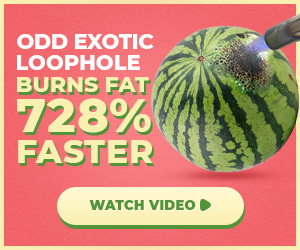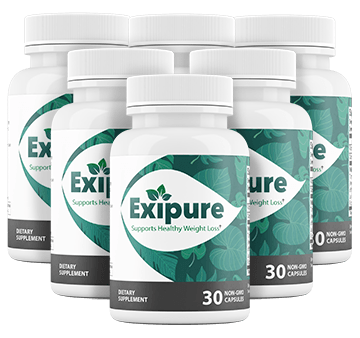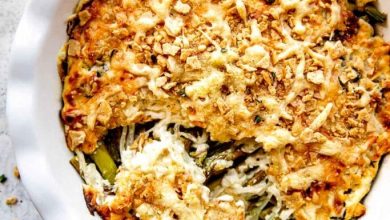What is Ghee? Benefits + Our Favorite Brand
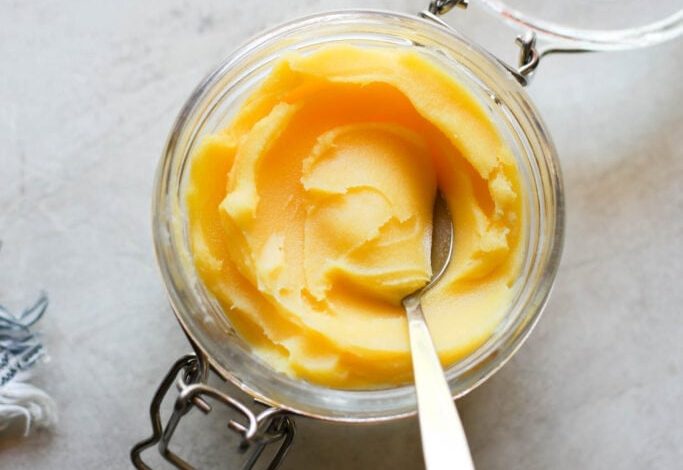
Ghee is a sort of clarified butter historically utilized in Indian cooking. It’s a fantastic on a regular basis fat for cooking that provides a ridiculous quantity of taste and nutrition to your meals and drinks.
The wealthy, nutty taste and excessive smoke level of ghee make it excellent for sautéeing, searing, frying, and roasting. We use it pretty usually in our recipes, as a lot of them are designed to work with dietary preferences and consuming types like Paleo, Primal, and Whole30. It’s additionally nice for vegetarian cooking.
Ghee Quick Facts
- Ghee is a wholesome fat that may profit the heart when utilized in moderation.
- Ghee is made by separating butterfat from milk solids and water in cow’s milk.
- Because the milk solids are eliminated when making ghee, it’s a fantastic selection for individuals with dairy sensitivities or those that are lactose illiberal. Note that not all dairy proteins are eliminated so if you’re extremely delicate or allergic to dairy then we advocate avoiding ghee.
- Ghee has a excessive smoke level that helps protect dietary worth and taste when cooking. The excessive smoke level makes it well-suited for roasting, sauteing, and pan frying.
- This fat supply is loaded with nutritional vitamins which are believed to spice up your immune system. This is why ghee is a staple in Ayurvedic drugs and Indian cooking.
What Are the Benefits of Ghee?
1. A Boost From Healthy Fats
Ghee is a fat, and after the dietary fat-phobic 1980’s we’ve lastly discovered to embrace the advantages of dietary fat for all-body health. Fat not solely makes meals style higher, nevertheless it’s additionally important for the absorption of vitamin A, vitamin D, vitamin E, and vitamin Ok discovered within the meals you eat.
For years, “experts” claimed that ldl cholesterol and fat result in heart illness however lately, many health researchers have questioned whether or not this is the case. But in actuality, the fatty acid profile in ghee may very well increase your immune system and cardiovascular operate.
Ghee is made up of short-chain and medium-chain fatty acids. Roughly 65% of the fat in ghee is saturated fat, with 30% being monounsaturated fat. The final 5% comes from polyunsaturated fat, the first fat present in vegetable oils. This kind of fat is extremely vulnerable to oxidation and rancidity, which is why it’s good to devour fatty oils low in polyunsaturated fat.
Saturated fat are essentially the most steady fat. These, together with the butyric acid, make ghee much less more likely to trigger irritation within the body than different oils. Butyrate is an vitality supply for intestinal cells and improves digestive health.
Ghee is free of business trans-fats and hydrogenated oils, which makes it a more healthy different to shortening, margarine, and different ‘buttery spreads’ made with vegetable oils.
2. Higher Smoke Point
What is a “smoke point?” When any given oil hits its smoke level, it begins to shimmer and begins to smoke. Beyond that smoke level, your cooking oil begins to interrupt down and might change the flavour of the meals. It may also start to emit aldehydes, probably dangerous aerosol compounds.
The smoke level of ghee is 485° F. This is on the very excessive finish — only some oils, like avocado oil, safflower, canola, and refined coconut oil have a smoke level above 400° F. For comparability, the smoke level of olive oil is between 325-400° F.
Because ghee’s smoke point is relatively high, it may be used for stir-frying and will get scorching sufficient to get a fantastic crisp sear in your meat and seafood with out the chance of fixing the flavour or releasing aldehydes.
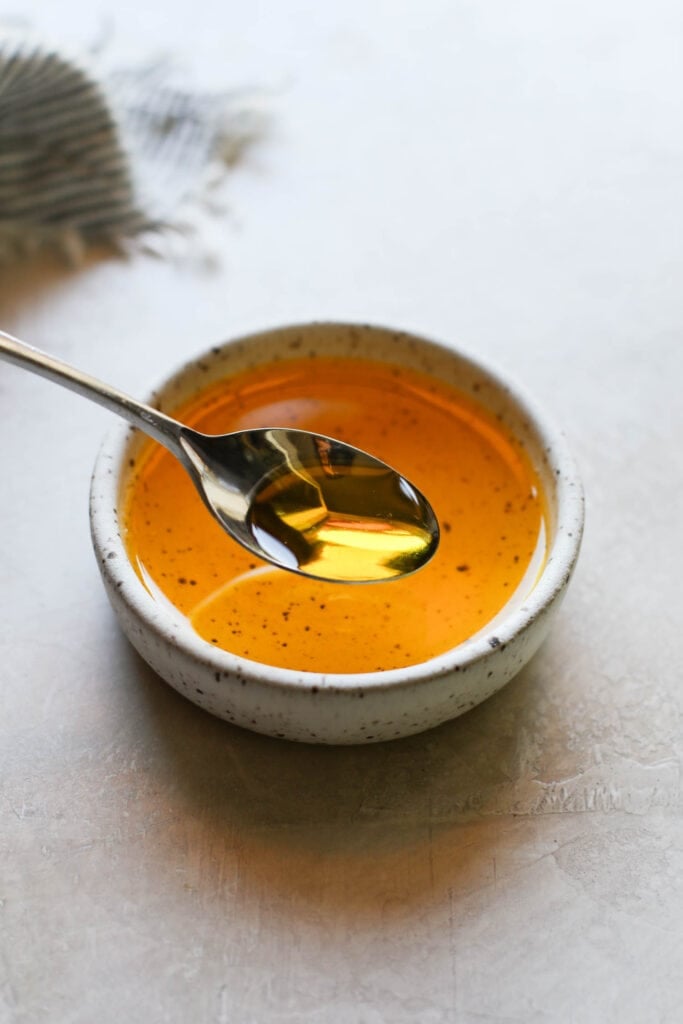
3. Ghee Lasts Longer
Polyunsaturated fat oxidize extra rapidly than saturated and monounsaturated fat. This causes them to go rancid. Because ghee has a low polyunsaturated fat content material, it’s very shelf-stable. It can keep good for months, even unrefrigerated.
What is the shelf lifetime of ghee? An opened jar of ghee saved at room temperature will keep good for about 6 months. If saved within the fridge, you’ll be able to double the shelf lifetime of ghee to 1 yr.
4. Good for Nourishing Your Body
Ghee has many makes use of in Ayurveda, the place it’s thought-about the healthiest edible fat. The nutrient density of ghee is thought to guard body tissues, improve intestine health, help in detoxing, and enhance mind health and focus.
In Ayurvedic drugs, ghee is usually blended with medicinal herbs to deal with particular situations. However, this is not the standard ghee you’d purchase from the grocery retailer. Sometimes, it’s even used as a topical answer for treating wounds and burns or for a therapeutic massage oil base.
Even when you’re not into Ayurveda or recreating your favourite Indian dishes at house, you’ll be able to nonetheless get pleasure from the advantages and wealthy taste that ghee has to supply. If you’re interested in attempting ghee, this is one among our favorite brands.
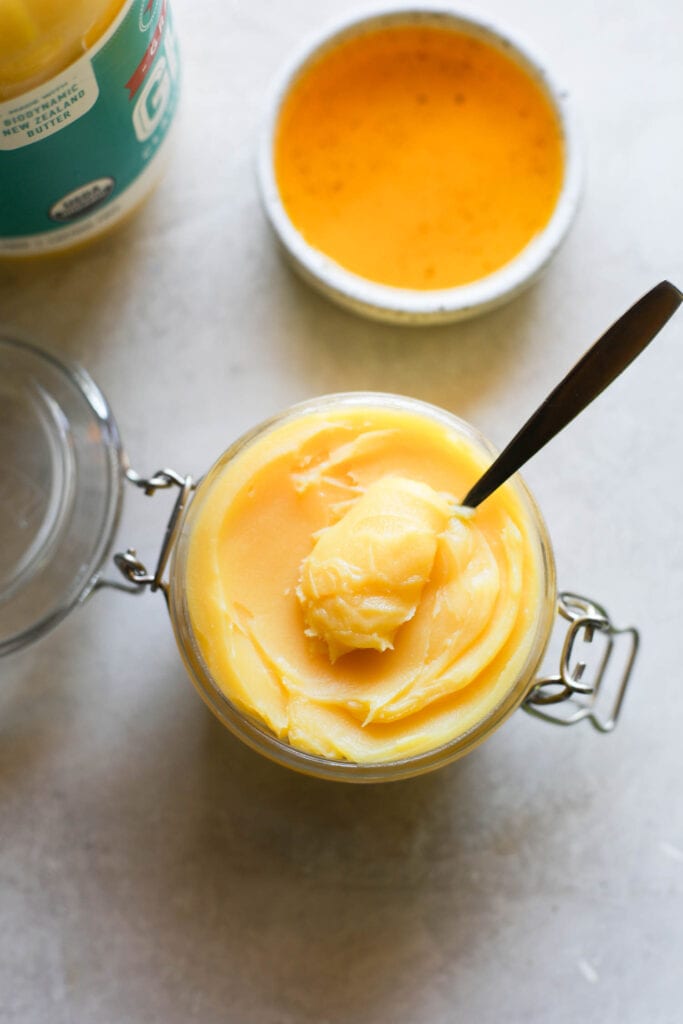
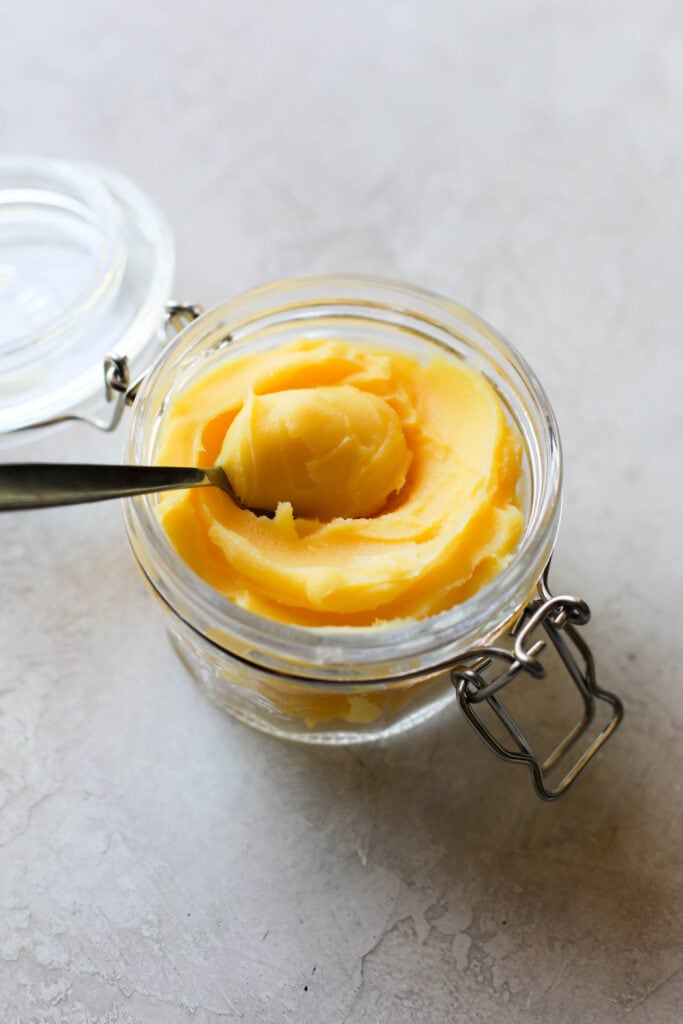
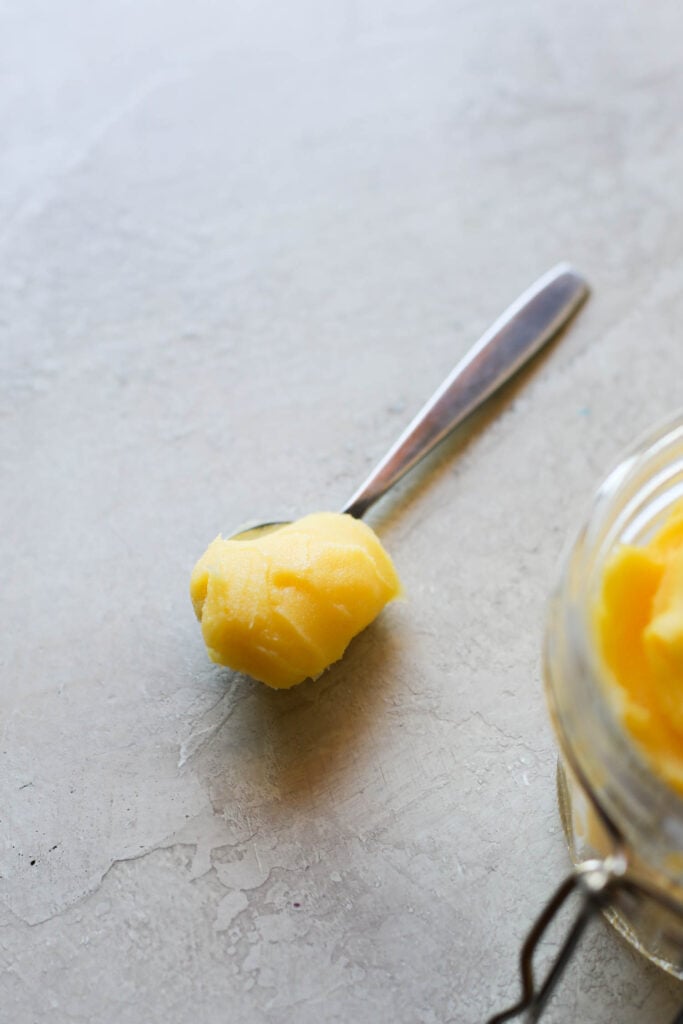
Ghee vs. Butter
Both ghee and butter are dairy merchandise produced from cow’s milk. They differ in the best way they’re produced and their dietary profile. Ghee, however not butter, might be appropriate for individuals with lactose intolerance, because the milk proteins and lactose (a sort of naturally occurring sugar) in butter are eliminated when ghee is made.
What is the distinction between ghee and butter? Butter is produced from the fat and protein of milk. Ghee, additionally known as clarified butter or anhydrous milk fat, is butter that has water and milk solids eliminated and a better focus of fat.
Milk solids include the non-fat portion of dairy. This contains the milk proteins like casein and whey and carbohydrates like lactose. There are nonetheless very low ranges of casein and lactose in ghee, however many lactose-intolerant individuals discover they’re simpler to digest than conventional butter.
Removing the milk solids is additionally what provides ghee its excessive smoke level and permits it to be saved at room temperature with out spoiling. Ghee’s smoke’s level is 485° F in comparison with butter at 302°F.
Why We Prefer Ghee From Grass-Fed Dairy
Ghee made from the milk of grass-fed cows is considerably increased in conjugated linoleic acid (CLA) than that produced from milk obtained from grain-fed cows. Lab research in animals have proven that CLA improved glucose and lipid metabolism, however there have been no long-term human research but.
CLA additionally provides different essential health advantages. It might scale back the chance of heart disease, Type 2 diabetes, and cancer in people who usually devour grass-fed meat and dairy as a part of an total wholesome diet.
That’s simply one of many many causes we advocate grass-fed dairy.
Making Ghee at Home
If your native grocery retailer doesn’t carry ghee and also you aren’t close to a south Asian grocer, you’ll be able to at all times attempt making ghee at house.
What is ghee made of? Ghee is historically produced from cow milk butter.
To make home made ghee:
- Melt unsalted butter over low warmth till the milk solids settle out to the underside of the pan.
- Carefully pressure the melted butter by means of a fine mesh strainer or cheesecloth to separate the wealthy, golden fat from the solids.
- When it’s filtered, maintain the oil that continues to be. It will solidify at room temperature, similar to butter. Store your ghee in a glass jar with an airtight seal like this one or repurpose a easy glass jar with tight-fitting lid for finest outcomes.
You will lose about 20-25% of the weight of the butter while you make ghee since you take away some liquid and solids. If you begin with a pound of butter, you’ll find yourself with a couple of cup and a half of ghee.
Click right here for a full step-by-step tutorial on How to Make Homemade Ghee.
Cooking instances for ghee range relying on the standard and temperature of the butter you might be utilizing. When making home made ghee, control your butter and look ahead to the milk solids to settle and be caramelized on the backside of your pan.
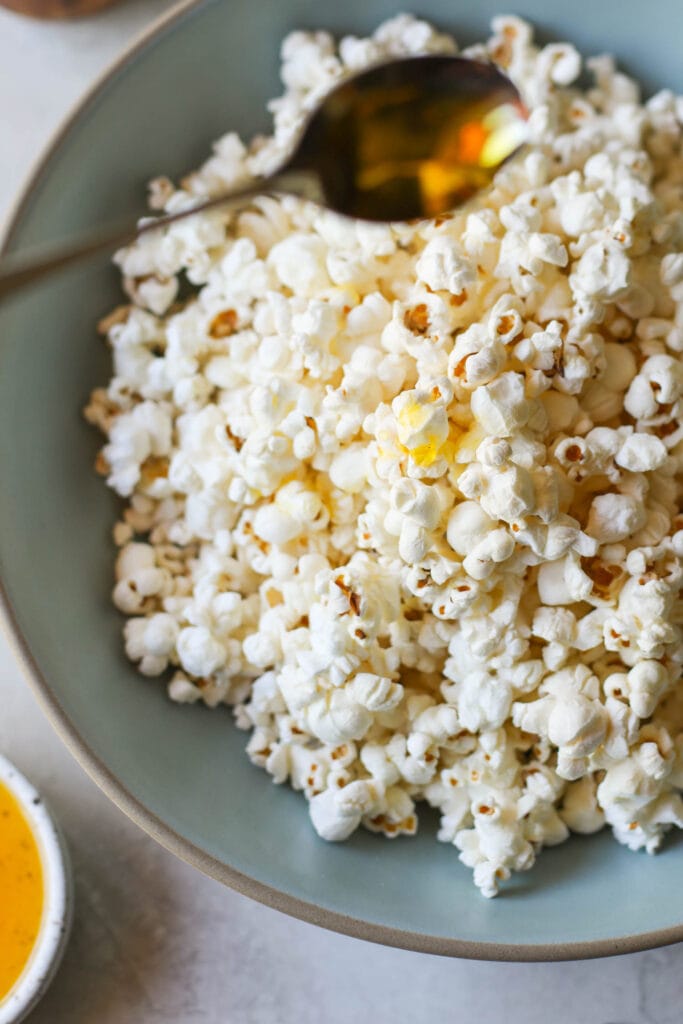
How to Use Ghee
To use ghee in your kitchen, you’ll be able to:
- Fry, roast, or sauté meats, fish, greens, and eggs in it
- Spread it on toast or bread
- Drizzle ghee oil over veggies as a of completion
- Add it to popcorn for enhanced taste
- Incorporate it into baked items as a alternative for butter or oil
- Put a tablespoon of ghee in your morning cup of espresso (Bulletproof or “butter coffee” often requires ghee and MCT oil)
Though ghee is a cornerstone in conventional Indian and Pakistani cuisines, its utility extends past these culinary traditions. It can successfully substitute butter or oil in most recipes, and its excessive smoke level makes ghee oil a improbable alternative for canola or comparable oils.
Our Favorite Brands Of Ghee
We’ve style examined a variety of sorts of ghee over time. Here are a few of our favourite manufacturers which are generally discovered on grocery retailer cabinets or accessible on-line.
- 4th & Heart — Made from grass-fed milk and accessible in number of flavors together with Original, Himalayan Pink Salt, Garlic, Vanilla Bean, and Turmeric
- Organic Valley — Made from grass-fed milk from a cooperative of small household farms
- Tin Star Foods — Made from grass-fed and biodynamic milk. Also accessible in Brown Butter flavor that’s nice for baking.
- Pure Indian Foods — Though solely accessible on-line, this is among the finest tasting and most genuine ghees we’ve tried. Also accessible in flavors like Cultured, Herbs de Provence, Italian, Garlic, Digestive, and Dessert ghee.
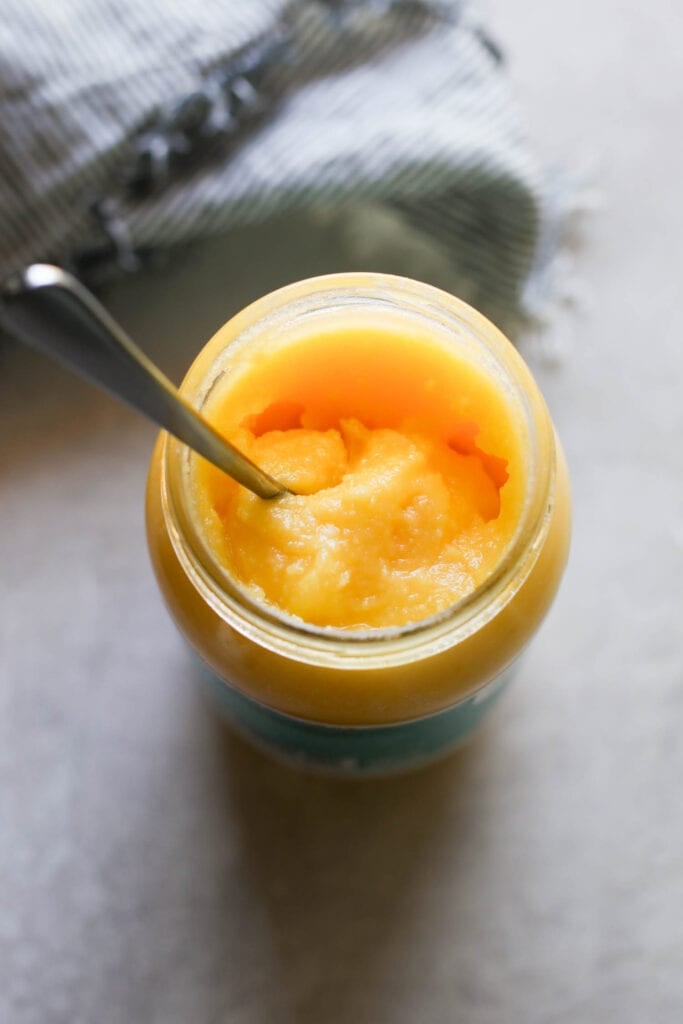
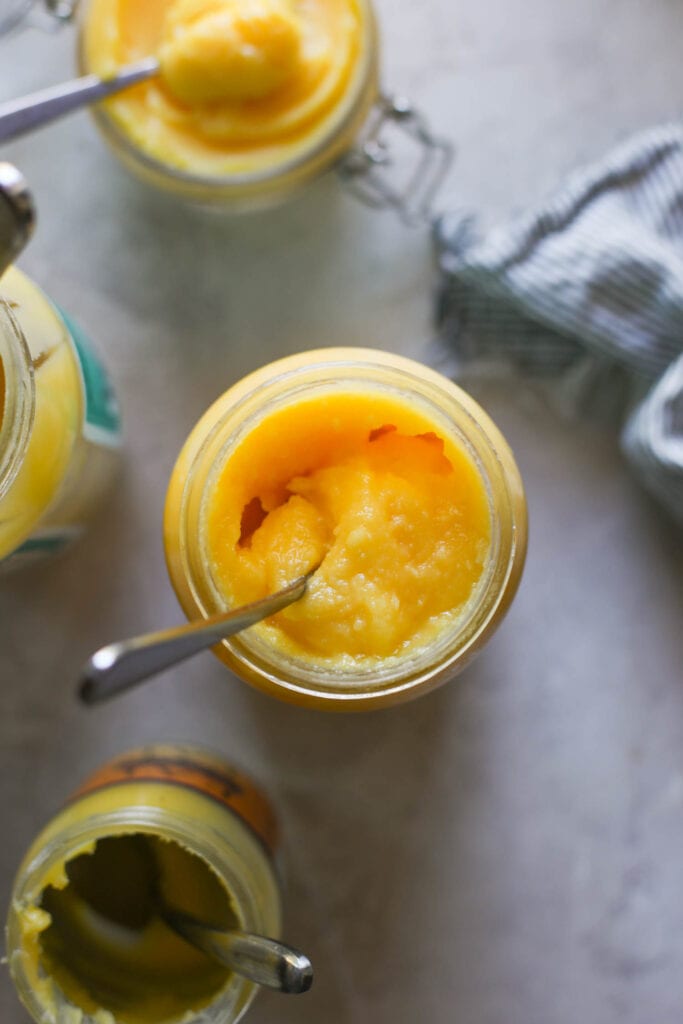
FAQs
Frequently Asked Questions
Ghee is a fantastic fat that is wealthy in nutritional vitamins, antioxidants, vitamins, and wholesome fatty acids. Like all fat, it must be utilized in moderation.
No, ghee is produced from dairy milk. While the lactose and casein have been eliminated, it’s nonetheless not appropriate for a vegan diet.
Plain ghee incorporates solely unsalted candy cream butter. Cultured ghee is produced from fermented candy cream and has a tangier style. Some manufacturers additionally provide ghee blends with different components to diversify the flavour profile. We love including slightly of this vanilla bean ghee to baked candy potatoes with a sprinkle of cinnamon.
Ghee has a roasted, barely nutty taste. It tastes like a cleaner, richer model of butter.
Ghee is higher for high-heat cooking and including richer flavors to dishes than olive oil, however olive oil is nice for marinades and dressings. Both ghee and olive oil have health advantages and might fill particular cooking necessities.
No, due to the warmth mandatory to provide ghee, it’s not a probiotic meals.
Ghee comes from the Sanskrit phrase ghrta, which suggests “to sprinkle.”
Pin Now to Reference Later!
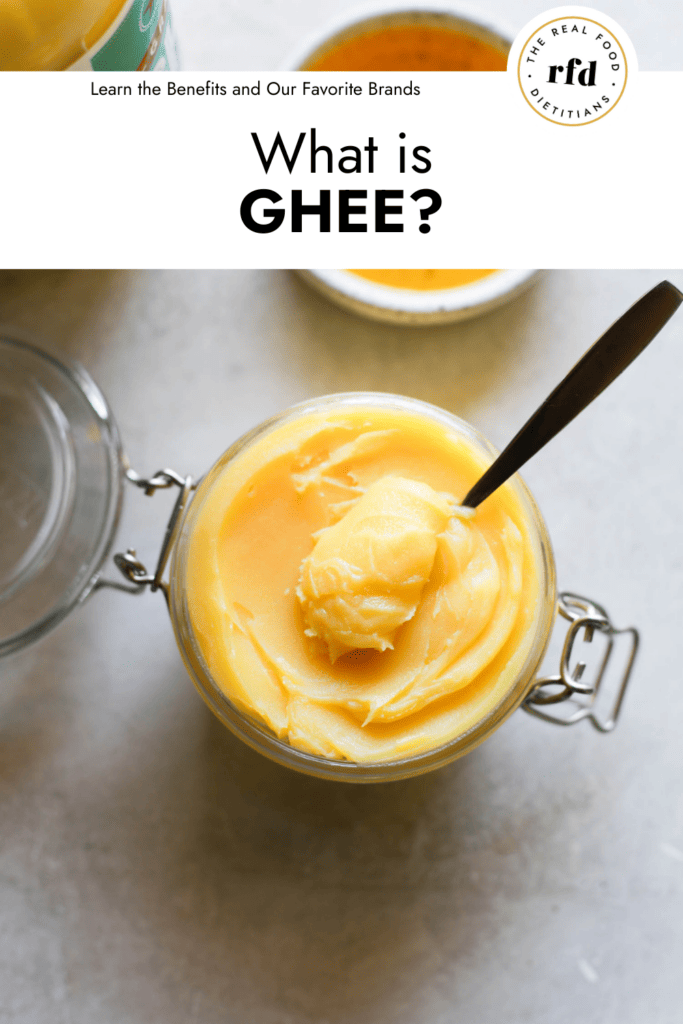
Source link


